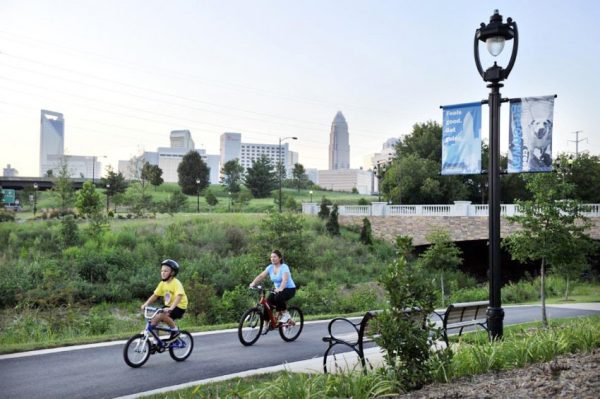Expecting 400,000 new Charlotteans, CDOT projects $5B in transportation needs

By 2040 Charlotte will grow by 400,000 people, city transportation planners project – an increase equal to the population of the cities of Minneapolis, Cleveland, Miami or New Orleans. How can Charlotte handle all those new daily trips?
The city’s Department of Transportation is proposing the city spend $5 billion over 25 years to keep up with transportation needs. That dollar figure, not adjusted for inflation, does not include transit projects, CDOT officials said as they presented their plans Monday to the City Council’s Transportation and Planning Committee.
With the expected population increase will come significant transportation challenges, Norm Steinman, who heads CDOT’s planning and design division, told the committee: “Those 400,000 additional people that are going to be living here in 2040? Well, they’re going to be making a lot more daily trips.”
Today, he said, city residents make about 3.2 million daily trips – including by car, bicycle, and transit and on foot, a number that doesn’t include trips of people who don’t live in Charlotte. By 2040 Charlotteans’ daily trips will increase by an estimated 50 percent, adding 1.5 million more daily trips, up to 4.5 million. “The vast majority will be in vehicles,” Steinman warned the council.
Scary though that may sound, especially to the thousands of Charlotteans who fume in traffic daily, Steinman pointed out that while daily trips are increasing, the number of vehicle miles traveled per person in Charlotte is declining. “One of the benefits of density is that trips get shorter,” he said. “There’s more congestion, but trips get shorter.”
The bulk of that projected $5 billion in spending, some $3 billion, would go for 100 arterial roadway projects, 40 intersections, 10 bridge replacements and 200 smaller scale projects. All those projects would include designing the streets for use by pedestrians and bicyclists in addition to motor vehicles – “multimodal” in traffic planner lingo.
Maintaining streets, sidewalks and curb and gutter, with a projected 12-year resurfacing cycle for streets, would cost an estimated $665 million.
Walkability improvements, including 250 miles of new sidewalks and 250 pedestrian crossing improvements, would cost an estimated $405 million. Other projected spending:
- Placemaking (traffic calming, streetscape/pedscaping, transit station area projects, etc.) – $330 million
- Technology $285 million
- Preserving opportunities (advance acquisition of rights of way, early engineering for selected projects, etc.) – $195 million
- Safety – $130 million
- Bicycle travel (250 miles of new bikeways including buffered bike lanes, and 80 bike-ped connections) – $100 million
Other highlights of the 25-year plan – updated every five years – include a Vision Zero-style emphasis on traffic safety. Vision Zero is a transportation safety philosophy that began in Sweden. Cities around the world have adopted it, including Chicago, San Francisco, New York, Austin, Texas, and San Jose, Calif. Its philosophy holds that traffic deaths are preventable deaths. Using education, legislation and design, the initiatives aim to reduce the number of motorists, pedestrians and bicyclists killed in traffic to zero.
The Transportation Action Plan, first adopted in 2006 and revised at five-year intervals, is the city’s vision for transportation. Although the first TAP was controversial – it included changes in city policy that some subdivision developers opposed, such as requiring more sidewalks to be built in new subdivisions – the 2011 revision was not. CDOT hopes the latest revision will be adopted by early 2017. Usually much of the money for the city’s transportation projects comes from the city’s regular bond issues, as well as from state and federal funds.